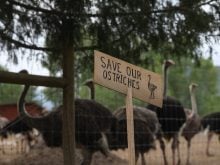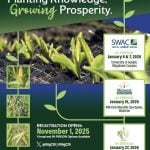SASKATOON – Little remains of the raw prairie that western farmers now sow to genetically engineered species of a chemical controlled monoculture.
Nearly all arable land in the Prairies is farmed. The original grasses that once covered and created this now valuable soil survive in only the most remote sections of plains. In Manitoba there remains only 4.8 million acres of natural grassland, in Alberta 18.9 million acres and in Saskatchewan 14.6 million.
A new provincial government initiative in Saskatchewan is designed to help protect and promote what remains.
Read Also

VIDEO: Agritechnica Day 4: Robots and more robots, Nexat loves Canada and the trouble with tariffs
Agritechnica Day 4: Robots and more robots, Nexat loves Canada and the trouble with tariffs.
An inventory of native prairie was compiled in 1995 by the Saskatchewan Wetland Conservation Corporation. The air photo analysis identified 600 sites of native prairie across the province. In some rural municipalities, such as those in the heavy clay of the Regina plains less than one percent of the land remained in its original state.
Findings were a surprise
“We knew that it was in decline, but until the inventory we had no idea how great the decline had become,” said Rick Bates of the wetland corporation.
While the new provincial initiative will not provide compensation to farmers and landowners who chose to protect remaining grasslands, it will assist with providing land management information, assessment and recognition of efforts to retain native prairie.
The program, Native Prairie Stewardship, is aimed at protecting the existing genetic stocks so they may be used to aid in breeding new plant varieties and provide the raw material for pharmaceutical research.
The voluntary program is designed to provide advice, not control the land base. Participating producers will make all management and land access decisions and have control over the publicity of their effort.
“We hope that landowners, once they realize that the program is voluntary, will take on the responsibility of maintaining these areas as natural resource for future generations,”said Bates.
The province is offering financial aid in extreme cases in order to protect the areas. Fencing, herbicides and water systems may be subsidized by the program.














